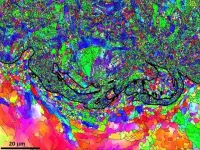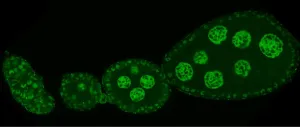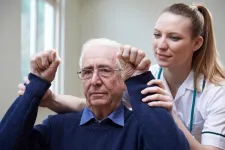Secret to how cholera adapts to temperature revealed
A protein that helps Vibrio cholerae adapt to temperature has been identified, providing insights into how bacteria change their biology under different conditions
2021-02-16
(Press-News.org) Scientists have discovered an essential protein in cholera-causing bacteria that allows them to adapt to changes in temperature, according to a study published today in eLife.
The protein, BipA, is conserved across bacterial species, which suggests it could hold the key to how other types of bacteria change their biology and growth to survive at suboptimal temperatures.
Vibrio cholerae (V. cholerae) is the bacteria responsible for the severe diarrhoeal disease cholera. As with other species, V. cholerae forms biofilms - communities of bacteria enclosed in a structure made up of sugars and proteins - to protect against predators and stress conditions. V. cholerae forms these biofilms both in their aquatic environment and in the human intestine. There is evidence to suggest that biofilm formation is crucial to V. cholerae's ability to colonise in the intestine and might enhance its infectivity.
"V. cholerae experiences a wide range of temperatures, and adapting to them is not only important for survival in the environment but also for the infection process," explains lead author Teresa del Peso Santos, a postdoctoral researcher at the Laboratory for Molecular Infection Medicine Sweden (MIMS), Umeå University, Sweden. "We know that at 37 degrees Celsius, V. cholerae grows as rough colonies that form a biofilm. However, at lower temperatures these colonies are completely smooth. We wanted to understand how it does this."
The researchers screened the microbes for genes known to be linked with biofilm formation. They found a marked increase in the expression of biofilm-related genes in colonies grown at 37C compared with 22C.
To find out how these biofilm genes are controlled at lower temperatures, they generated random mutations in V. cholerae and then identified which mutants developed rough instead of smooth colonies at 22C. They then isolated the colonies to determine which genes are essential for switching off biofilm genes at low temperatures.
The most common gene they found is associated with a protein called BipA. As anticipated, when they intentionally deleted BipA from V. cholerae, the resulting microbes formed rough colonies typical of biofilms rather than smooth colonies. This confirmed BipA's role in controlling biofilm formation at lower temperatures.
To explore how BipA achieves this, the researchers compared the proteins produced by normal V. cholerae with those produced by microbes lacking BipA, at 22 and 37 degrees Celsius. They found that BipA alters the levels of more than 300 proteins in V. cholerae grown at suboptimal temperatures, increasing the levels of 250 proteins including virtually all known biofilm-related proteins. They also showed that at 37 degrees Celsius, BipA adopts a conformation that may make it more likely to be degraded. In BipA's absence, the production of key biofilm regulatory proteins increases, leading to the expression of genes responsible for biofilm formation.
These results provide new insights into how V. cholerae adapts to temperature and will help understand - and ideally prevent - its survival in different environments and transmission into humans.
"We have shown that BipA is critical for temperature-dependent changes in the production of biofilm components and alters colony shape in some V. cholerae strains," concludes senior author Felipe Cava, Associate Professor at the Department of Molecular Biology, and MIMS Group Leader and Wallenberg Academy Fellow, Umeå University. "Future research will address the effect of temperature- and BipA-dependent regulation on V. cholerae during host infection and the consequences for cholera transmission and outbreaks."
INFORMATION:
Media contact
Emily Packer, Media Relations Manager
eLife
e.packer@elifesciences.org
+44 (0)1223 855373
About eLife
eLife is a non-profit organisation created by funders and led by researchers. Our mission is to accelerate discovery by operating a platform for research communication that encourages and recognises the most responsible behaviours. We aim to publish work of the highest standards and importance in all areas of biology and medicine, including Microbiology and Infectious Disease, while exploring creative new ways to improve how research is assessed and published. eLife receives financial support and strategic guidance from the Howard Hughes Medical Institute, the Knut and Alice Wallenberg Foundation, the Max Planck Society and Wellcome. Learn more at https://elifesciences.org/about.
To read the latest Microbiology and Infectious Disease research published in eLife, visit https://elifesciences.org/subjects/microbiology-infectious-disease.
[Attachments] See images for this press release:

ELSE PRESS RELEASES FROM THIS DATE:
2021-02-16
An international team of researchers has solved a puzzling phenomenon whereby strangely beautiful, vortex-like structures appear between materials deposited onto engineering components used in multiple settings - from space shuttles to household items and everyday transport vehicles.
The discovery may ultimately improve the efficiency of the "Cold Spray" (CS) deposition process from which these structures are formed - a not-insignificant consideration from a financial perspective, or from a functional one given that some of the materials created by CS are pushed to the limit in outer space.
The discovery is featured on the front cover of international journal, Materials & Design.
Cold Spray (CS) and deposition efficiency (DE)
CS enables the formation of coatings, ...
2021-02-16
Why do genes need to be silenced? The "genes" in question are in fact transposons, selfish genetic elements that seek to self-multiply at the host's expense and that need to be controlled. Julius Brennecke's group at IMBA focuses on lifting the mysteries of a specific type of transposon silencing, namely the piRNA pathway in animal gonads. Understanding this ancient silencing system promises to reveal general mechanistic principles of gene expression and chromatin biology.
Gene silencing: either before they "speak", or right as they attempt to
Heterochromatin, a tightly packed form of DNA, plays an essential role in transposon ...
2021-02-16
Many steep valleys in the European Alps show the relicts of large rockslides, during which several hundreds of million cubic metres of rocks get instable, collapse and impact everything on their path. "For most of these, we still do not know how they are caused, because these rockslides occurred long before the start of written history in the region about 1000 years ago," says Patrick Oswald, PhD student at the Department of Geology of the University of Innsbruck and lead author of the study. "Curiously, many of these ancient rockslides occurred together in clusters, meaning they are found in small regions and have a rather comparable age". This enigmatic pattern has puzzled researchers over the last decades and fuelled some intense debates. Some experts ...
2021-02-16
"Thin films are solid state substances that can be only several atomic layers thick. Usually, their properties are considerably different from the properties of the original substances on the macroscale. The areas of their application keep expanding and include nanoelectronics, optoelectronics, spintronics, electro-, and photocatalysis, as well as such important fields of economics as space technologies and instrument building. Micromodule devices for space crafts and medical technologies are also promising areas in which thin films can be used," said Vyacheslav Fominski, a project supervisor representing MEPhI.
To reduce friction and solve many ...
2021-02-16
Cataracts are the most common eye ailment in humans. However, the exact processes leading to this condition are not fully understood. A team of researchers headed by the Technical University of Munich (TUM) has now discovered that the composition of the protein solution plays a decisive role. Their conclusions are contrary to prevailing opinion in the field.
The cells in the lens consist of a highly concentrated protein solution that is normally clear. "When the balance of the proteins in the lens is destroyed, they clump together and the lens becomes cloudy," says Prof. Johannes Buchner of the Chair of Biotechnology at TUM. This results in the condition known as cataracts.
The clouding can have different causes. Because the proteins in the lens are formed ...
2021-02-16
The 'sloshing' of a quantum fluid comprised of light and matter reveals superfluid properties.
An Australian-led team of physicists have successfully created sloshing quantum liquids in a 'bucket' formed by containment lasers.
"These quantum fluids are expected to be as wavy as the oceans, but catching clear pictures of the waves is an experimental challenge," says lead author Dr Eliezer Estrecho.
Led by the Australian National University (ANU), the team serendipitously observed the wavy motion of the quantum fluid in an optically-controlled bucket, gaining new insights of the intriguing superfluid properties of this peculiar, hybrid light-matter system.
Superfluidity ...
2021-02-16
The processes in living beings follow a finely orchestrated choreography down to the molecular level. Rhythmic processes are found everywhere in biology, for example, the 24-hour circadian cycle, a kind of "internal clock", plays an important role in regulating many processes in living cells, including metabolism and cell division mechanisms.
Scientists from Saarbrücken and Kaiserslautern have now taken a closer look at a similar cycle, the somewhat shorter ultradian cycle of baker's yeast. Under the leadership of Bruce Morgan, Professor of Biochemistry at ...
2021-02-16
Combining healthy lifestyle interventions reduces heart disease through beneficial effects on different lipoproteins and associated cholesterols, according to a study published February 9 in eLife.
Having a healthy lifestyle has long been associated with a lower risk of developing heart disease. The new study provides more detailed information on how healthy lifestyles improve cholesterol, and suggests that combining cholesterol-lowering medications and lifestyle interventions may yield the greatest benefits to heart health.
Cholesterol-lowering ...
2021-02-16
The fact that cells are motile and come into contact with each other is one of biology's fundamental principles. During embryonic development, cells must communicate with their neighbors in order to find their proper place in the differentiating organism. Wound healing is another process in which direct intercellular interactions are essential. In this context, motility enables cells to migrate to the location of the lesion and regenerate lost structures. Cancer cells also make use of this property to leave their site of origin in the primary tumor, which allows them to initiate the formation of metastatic tumors in other tissues.
"In recent years, biologists ...
2021-02-16
An international study has shown, for the first time, that the capacity of the human brain to recover and rewire itself peaks around two weeks after a stroke and diminishes over time.
The finding, published today in the Neurorehabilitation and Neural Repair journal, is the result of a study in London and Adelaide that followed the recovery of 60 stroke patients up to one year after their stroke.
Lead author Dr Brenton Hordacre, from the University of South Australia, says the multi-site study showed conclusive evidence that the brain only has a small window of opportunity to more easily repair itself after stroke.
"Earlier animal studies suggested ...
LAST 30 PRESS RELEASES:
[Press-News.org] Secret to how cholera adapts to temperature revealed
A protein that helps Vibrio cholerae adapt to temperature has been identified, providing insights into how bacteria change their biology under different conditions





